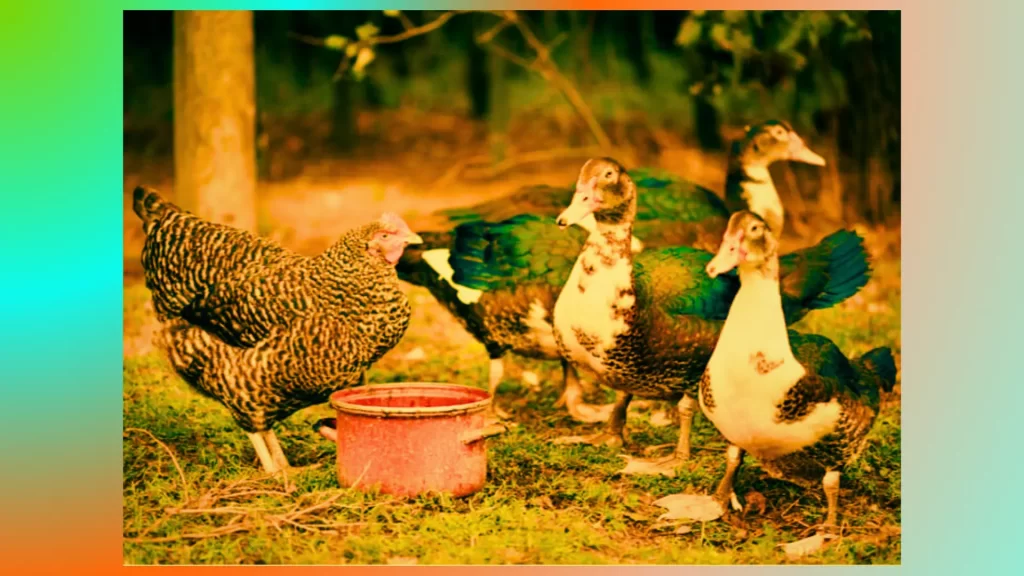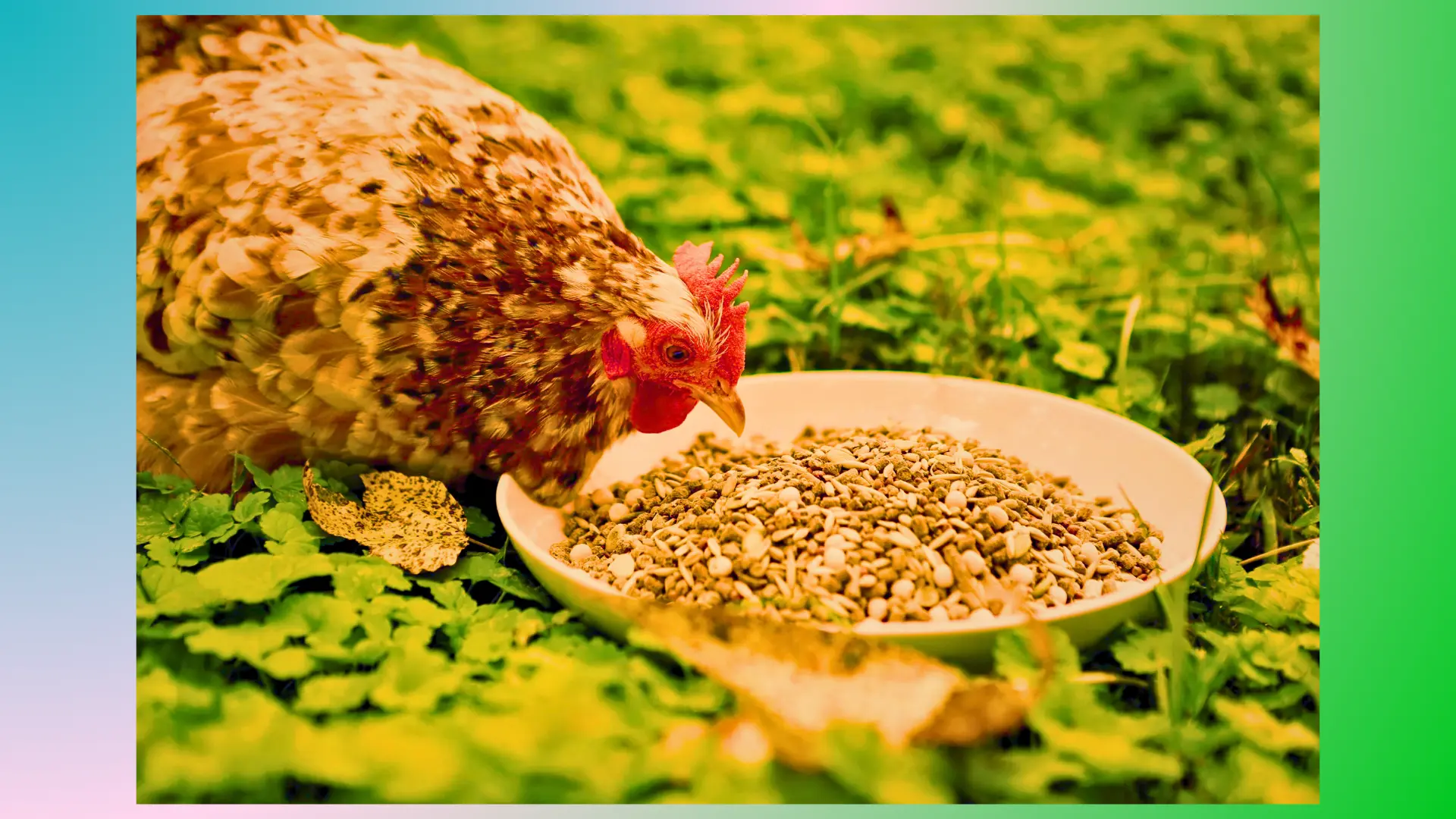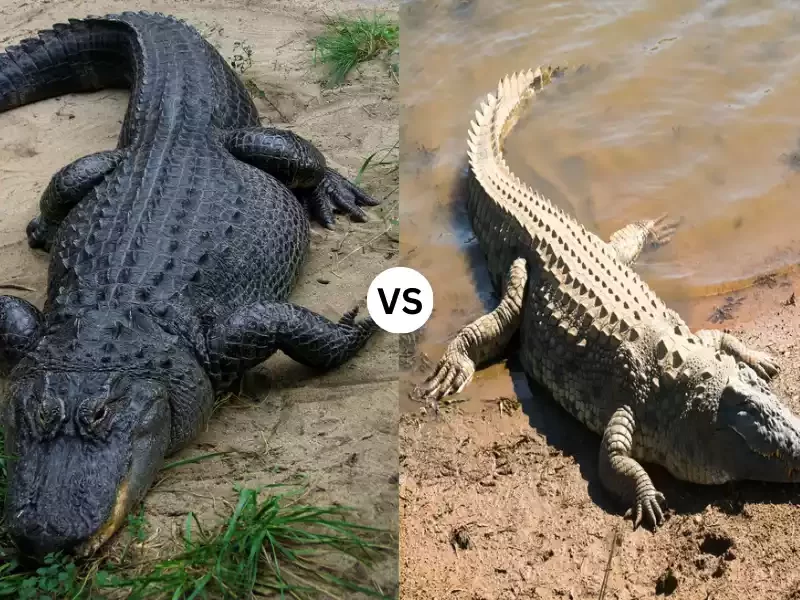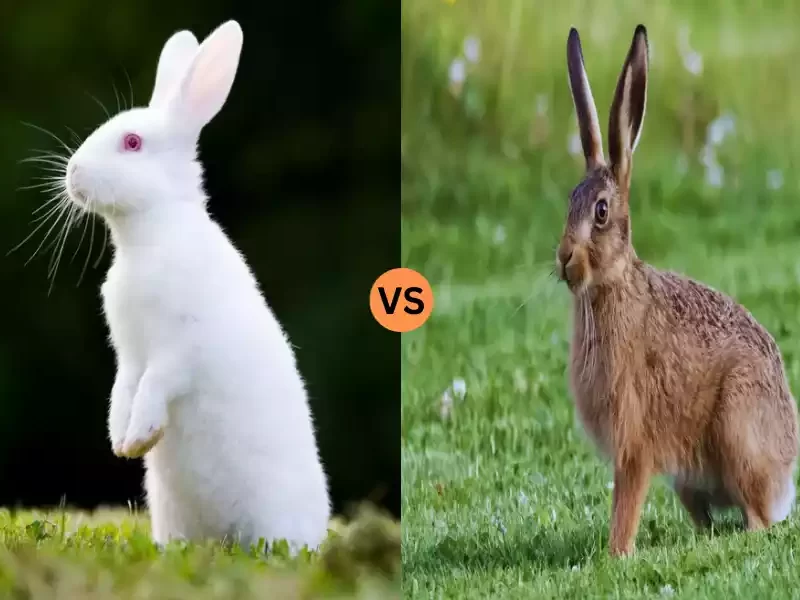Brief Overview of Duck and Chicken
Chickens and ducks are both domesticated birds that are commonly seen worldwide. While they share some similarities, such as belonging to the class Aves and being raised for their eggs and meat, there are distinct differences between the two.

Ducks (family Anatidae) are aquatic birds known for their webbed feet, waterproof feathers, and ability to swim. They have a streamlined body shape, with a longer neck and a broad, flat bill called a “bill” rather than a traditional beak. Ducks can be found in many habitats, from lakes and rivers, ponds and marshes, as well as streams. Ducks are famous for their social interactions; often found grouped together. Their diet consists of food such as seeds, plants, insects and even small fish – though the latter species is less frequently seen today than its cousin.
Chickens are terrestrial birds primarily raised for their meat and eggs. They have a compact body shape with a short neck and a distinctive beak adapted for pecking and scratching the ground. Chickens are commonly found in farms and backyards, and they prefer dry habitats. They are social animals as well, typically living in flocks with a hierarchical structure. Chickens have an omnivorous diet, consuming grains, seeds, insects, worms and occasionally small reptiles or mammals.
These general characteristics provide a foundation for exploring the specific differences between ducks and chickens in terms of their physical appearance, habitat, behavior, feeding habits, egg and meat production, health considerations and practical applications. Understanding these differences can help individuals make informed decisions about farming, pet ownership or other areas related to these two bird species.
Importance of understanding the differences between Duck and Chicken
Understanding the differences between chickens and ducks is vitally important for several reasons, including:
- Proper care and management: Ducks and chickens have different dietary, environmental, and behavioral requirements. By understanding these distinctions, the appropriate care and management practices can be employed to promote birds’ wellbeing and ensure their optimal health and welfare. It helps in providing suitable housing, feeding and overall husbandry practices specific to each species.
- Optimal productivity: If you are raising ducks or chickens for egg or meat production, understanding their distinct characteristics can enhance productivity. Ducks and chickens have different egg-laying patterns, egg sizes and meat qualities. Knowing these differences enables farmers to make informed decisions about breed selection, feeding strategies, and breeding practices to maximize productivity.
- Disease prevention and management: Ducks and chickens can be susceptible to different diseases and health issues. Recognizing the specific health concerns associated with each species helps in implementing appropriate preventive measures and effective disease management protocols. It allows for early detection, timely treatment and biosecurity practices to minimize the impact of diseases on the flock.
- Personal preferences and suitability: Understanding the differences between ducks and chickens helps individuals make informed decisions about which bird species best aligns with their preferences, goals and available resources. Some people may prefer the beauty and swimming abilities of ducks, while others may prefer the compactness and ease of care of chickens. Understanding these differences enables individuals to choose the right bird species for their specific needs and circumstances.
- Environmental considerations: Ducks and chickens may have different environmental impacts based on their natural behaviors and requirements. Ducks are adapted to aquatic habitats and may thrive in wetter areas, while chickens are more adapted to drier environments. Understanding these differences can help in making environmentally conscious decisions when it comes to habitat suitability and conservation efforts.
Understanding the differences between ducks and chickens is essential for proper care, productivity, disease management, personal preferences and environmental considerations. It enables individuals involved in poultry farming, pet ownership or other related activities to make informed decisions that promote the well-being of the birds and optimize desired outcomes.
Physical Characteristics
Physical characteristics and traits differ considerably among chickens and ducks.
Here are just a few significant ones:
1. Appearance:
- Plumage: Ducks and chickens have distinct feather patterns. Ducks often have waterproof feathers that help them stay buoyant in water. Their feathers come in various patterns and colors, from solid patterns, mottled colors or even iridescent hues, while chickens have the capability of showing various plumage designs such as solid colors, stripes speckled with spots or feathers.
- Body shape and size: Ducks generally have a more elongated and streamlined body shape, with a curved neck. Their bodies are adapted for swimming and have webbed feet for efficient movement in water. Chickens have a stockier build, with a rounded body and a shorter neck. They have feet with sharp claws for scratching the ground.
2. Beaks:
- Duck bills: Ducks have flat, broad bills that are specially designed for their feeding habits. Their bills have serrated edges called “lamellae” that help them filter small organisms from the water while retaining larger food items.
- Chicken beaks: Chickens have pointed, curved beaks adapted for pecking and scratching the ground. Their beaks are well-suited for foraging, digging, picking up grains, seeds and insects.
3. Feet and Legs:
- Ducks possess feet with webbed surfaces designed for swimming efficiently. Their feet have thin layer of skin between each toe that provides great lubrication in moving through water easily.
- Chickens possess clawed feet with thin leg skins designed for walking, perching and scratching the ground in search of food sources.
4. Sexual Dimorphism:
- In many duck species, males (drakes) exhibit brighter and more vibrant plumage compared to females (ducks). This is known as sexual dimorphism and is often related to courtship and mating displays.
- Chicken breeds vary significantly in terms of the level and pattern of sexual dimorphism they display. Some breeds may have slight differences in plumage coloration or comb size between males (roosters) and females (hens), while other breeds may exhibit more pronounced differences in size, feather patterns or comb and wattle development.
These physical characteristics highlight the unique adaptations of ducks and chickens to their respective habitats and lifestyles. Understanding these differences can aid in species identification, appreciation of their natural behaviors and appropriate care and management practices.
Habitat and Behavior
Behavior and habits are two significant differentiating characteristics between ducks and chickens.
Here are the primary distinctions:
1. Habitat:
- Ducks: Ducks are primarily aquatic birds and are well adapted to various water habitats such as lakes, rivers, ponds, marshes, and wetlands. They have webbed feet that facilitate swimming and their waterproof feathers protect them from water saturation. Ducks also nest near water bodies, constructing nests on the ground or in vegetation near the water’s edge.
- Chickens: Chickens are terrestrial birds and are commonly found in farms and backyards. They prefer drier environments and are well adapted to living on the ground. Chickens typically build nests in protected areas on the ground, often in secluded corners of their coop or in nesting boxes provided by their caretakers.
2. Social Behavior:
- Ducks: Ducks are highly social animals and are often found in groups called flocks. They engage in cooperative behaviors foraging together or alerting each other to potential threats. Ducks also exhibit strong bonding and mate fidelity. Some species form large flocks during migration, while others establish smaller, more stable groups.
- Chickens: Chickens are also social animals and have a hierarchical social structure within their flock. They establish a pecking order, with dominant individuals asserting their authority over subordinate ones. Chickens engage in behaviors such as dust bathing, communal roosting and vocal communication within the flock.
3. Foraging Behavior:
- Ducks: Ducks have diverse feeding habits. They consume aquatic seeds, plants, cereal grains and other sources such as aquatic seeds, aquatic seeds plants cereal grains small crustaceans insects amphibians or fish. They often forage by dabbling or upending their bodies in shallow water to reach food sources.
- Chickens: Chickens are also omnivorous but have different foraging behaviors. Chickens mainly feed on seeds, grains, grasses, insects worms and other small invertebrates such as insects. Their beaks are used to scratch around in search of potential sources of sustenance. Typically uncovering and eating seeds insects plants etc.
These habitat and behavioral differences reflect the natural adaptations and ecological roles of ducks and chickens. Understanding these distinctions helps in creating appropriate living conditions, providing suitable foraging opportunities and promoting the well-being of these birds in their respective environments.
Feeding Habits

Chickens and ducks differ in their food preferences and eating habits according to their natural behavior and preferred diets, but here are the major distinctions:
1. Ducks:
- Herbivorous tendencies: Many duck species have herbivorous tendencies, feeding on aquatic plants, grasses and weeds. They often graze on vegetation found in or near water bodies, including submerged plants, algae and aquatic insects.
- Omnivorous tendencies: While some ducks primarily consume plant material, many species have omnivorous diets. They consume small invertebrates snails, insects and even amphibians and small fish as part of their diet. This diversity in diet depends on the duck species and its specific ecological niche.
2. Chickens:
- Chickens tend towards an omnivorous behavior: Chickens have multi-siblings behavior. Meaning that they consume both animal and plant matter for sustenance. Their diet consists of seeds, grains and grasses as well as fruits, insects, vegetables and even small mammals like small reptiles or mammals that live nearby. Chickens use their beaks to search for food by scratching at the soil to reveal hidden treats which they then consume by probing with their beak.
3. Feeding Behavior:
- Ducks: Ducks exhibit different feeding behaviors depending on their preferred food sources. Dabbling ducks, such as mallards, feed by dipping their heads into shallow water, upending their bodies, or tipping forward to reach food below the water’s surface. They use their bills to filter out food items from the water. Diving ducks, such as mergansers, dive underwater to catch fish, crayfish or other aquatic prey.
- Chickens: Chickens use their beaks to peck and scratch the ground, seeking out seeds, insects and vegetation. They exhibit a characteristic scratching behavior, digging into the soil with their feet to uncover food hidden beneath the surface. Chickens also engage in dust bathing, where they roll and fluff their feathers in dry dirt or dust to keep themselves clean and free of parasites.
These feeding habits reflect the natural adaptations of ducks and chickens to their respective environments and dietary needs. Understanding these differences helps in providing appropriate nutrition and feeding practices for these birds, whether they are kept as pets, used for egg production or raised for meat.
Egg Production

Egg production is an important aspect of both ducks and chickens. Here are the key differences in their egg production:
1. Duck Egg Production:
- Egg size and color: Duck eggs are typically larger than chicken eggs. They are known for their larger size and have a distinctive oval shape. The size can vary depending on the duck breed and individual bird. Duck eggs come in various shades and styles. White, off-white and cream are the main options with pale greenish-blue being also common. Egg color may vary among different duck breeds.
- Nesting habits: Ducks generally lay their eggs in nests on the ground or in vegetation near water bodies. They create nests by lining a depression with feathers, leaves and other materials. Some duck breeds, such as Muscovy ducks, may also nest in tree cavities or elevated areas.
- Broodiness: Certain duck breeds exhibit broodiness, meaning they have a natural tendency to incubate and hatch their eggs. Broody ducks will sit on their eggs, providing the necessary warmth and protection for successful incubation and hatching.
2. Chicken Egg Production:
- Egg size and color: Chicken eggs are smaller compared to duck eggs. They have a standard oval shape and a variety of colors, including white, brown, cream and even blue or green in certain breeds. Eggshell color may depend upon the breed of chicken that laid it. Genes play an integral role in this determination process.
- Nesting habits: Chickens typically lay their eggs in nests provided within their coop or designated nesting boxes. Nesting areas have been designed to offer secure, comfortable and private environments for egg-laying hens.
- Broodiness: While broodiness was a common trait among older chicken breeds, it has been selectively bred out of many modern chicken breeds. Some heritage or rare chicken breeds may still exhibit broody behavior, where they will sit on and incubate their eggs.
3. Egg-laying frequency: Ducks and chickens have different egg-laying patterns. Ducks generally have a lower egg-laying frequency compared to chickens. Breed and species specific, the birds typically lay eggs daily or every other day. Chickens, especially commercial laying breeds are bred for higher egg production and can lay eggs almost daily, especially during their peak laying period.
Remember to always choose eggs from healthy chicken or duck sources when crafting culinary creations, like recipes using chicken and duck eggs. Both varieties provide nutritionally sound solutions. The choice between duck and chicken eggs often depends on personal preference, availability and specific culinary requirements.
Understanding egg sizes, colors, nesting habits and egg-laying cycles of chickens and ducks will enable individuals to make informed choices regarding egg production, selection and consumption.
Meat Production
Meat production is an important aspect of both ducks and chickens. Here are the key differences in their meat production:
1. Duck Meat:
- Flavor and texture: Duck meat is known for its distinctive flavor, often described as richer and more pronounced compared to chicken meat. It has a darker color and a richer taste due to its higher fat content. Duck meat has a tender texture and can be moist and succulent when cooked properly.
- Culinary uses: Duck meat is highly versatile and used in a variety of dishes worldwide. It is commonly roasted, grilled or braised. Duck breast is a popular cut that can be served medium-rare for a tender and flavorful experience. Duck legs and thighs are often used in dishes such as confit or cassoulet. Duck meat is also used in making products like sausages, pâtés and cured meats.
2. Chicken Meat:
- Flavor and Texture: Chicken meat has a milder flavor compared to duck, with lighter hue and milder flavors, making it easier for marinades or spices to absorb its flavors into its surface layers. Chicken’s soft yet humid texture may differ depending on which cut is chosen – all traits characteristic of good poultry meat!
- Culinary Applications of Chicken Meat: Chicken is one of the world’s favorite poultry meats and it is used in an endless number of culinary applications worldwide. Chicken can be enjoyed roasted or grilled before it is stewed or stir-fried and used in stir-fries soup curries and sandwiches as well. There are various species such as breasts thighs drumsticks wings that provide multiple recipes and cooking options when choosing to prepare this protein-rich staple meat source.
3. Yield and Cooking Methods:
- Duck: Ducks generally have a higher fat content compared to chickens. This can result in a higher yield of fat or rendered duck fat during cooking. The higher fat content contributes to the rich flavor and moistness of the meat. Due to the fat content, duck meat can be cooked at slightly lower temperatures and for longer durations to render the fat and achieve desired results.
- Chicken: Chickens have a lower fat content compared to ducks. This can result in leaner meat, which is often preferred by individuals seeking lower-fat options. Chicken meat can be prepared using various cooking techniques and times depending on its desired outcome, although generally more of it needs to be cooked than duck.
When it comes to meat production, both duck and chicken offer unique flavors and culinary experiences. The choice between the two often depends on personal preferences, regional cuisines and specific recipe requirements. Understanding the differences in flavor, texture and cooking methods allows individuals to make informed decisions when selecting and preparing duck or chicken meat for consumption.
Health Considerations
Concerning animal health, there are a few aspects related to chickens and ducks which you need to keep an eye on.
- Fat content: Duck meat contains more fat than its chicken meat counterpart, contributing to its flavor and moist texture. As this fat content can have an impactful impact on flavor and moisture levels, it’s important to monitor how much you are eating; especially those watching their consumption or with certain dietary restrictions.
- Cholesterol levels: Duck meat has higher cholesterol levels compared to chicken, so those on diets low in cholesterol should limit or opt for leaner cuts of duck.
- Omega-3 Fats: Duck meat may contain higher concentrations of omega-3 fatty acids than conventionally raised chicken, potentially offering benefits for cardiovascular health and possessing anti-inflammatory properties. Precise levels depend upon its diet and environment.
- Use of Antibiotics: Commercially Raised Chickens Are More At Risk Antibiotics may be utilized during production to prevent or treat illnesses in order to ensure this practice doesn’t occur it’s essential that farmers understand how and where the birds come from so as to limit or avoid using any unnecessary antibiotics altogether.
- Allergies: Some individuals may experience sensitivities or allergies to poultry products like chicken and duck, such as eggs. It is essential that you are aware of any allergies or sensitivities you have and take appropriate measures when eating or handling these items.
- Food Safety and Storage: Proper handling, storage and cooking of poultry meat is key in avoiding foodborne illness. Proper hygiene practices must be observed, make sure it reaches the required internal temperature and avoid cross-contamination with other items in the kitchen.
- Quality and Source: The quality and source of poultry products could have an effect on their health effects, so selecting poultry kept under more organic and ethical circumstances, including organic or free-range options can bring additional health advantages while limiting exposure to harmful chemicals.
Speak to a health expert or registered dietitian if you’re having medical concerns or restrictions in regards to diet. They can offer guidance regarding including chicken or duck meat as part of an enjoyable and balanced meal plan.
Practical Applications and Benefits
Understanding the practical applications and benefits of both ducks and chickens can help individuals make informed decisions regarding their utilization.
Here are some practical applications and benefits of ducks and chickens:
1. Ducks:
- Controlling Pests: Ducks make excellent natural pest-control agents. Their beaks chomp on insects such as snails and slugs which could harm gardens or crops if left to their own devices. By including ducks in agricultural systems they may help reduce pest numbers without resorting to chemical solutions. Allowing ducks free reign over gardens or including them within agricultural systems helps ensure less need for chemical solutions for controlling them.
- Egg production: Ducks provide fresh eggs which are both large in size and distinctively flavorful, earning praise from culinary professionals worldwide. Duck eggs can be utilized in numerous recipes like custards, baked goods or egg omelets for optimal use.
- Production of Meat: Ducks raised for meat are an incredible source of delicious and versatile protein sources, widely popular across various cuisines as an ingredient to use in various meals and culinary creations.
- Down and feathers: Duck and down feathers provide an abundance of feathers crafted from down, which are then utilized in comforters, pillows and other bedding items. Duck feathers also contribute to outdoor equipment production such as sleeping bags and jackets.
2. Chickens:
- Egg Production: Chickens are our primary source of eggs to eat. Their prolific egg-laying has become known worldwide, providing humans with access to an inexpensive protein source in many different dishes such as baking or cooking; not forgetting protein powder alone! Egg production from chickens remains steady and plentiful as we consume their products on an almost daily basis.
- Production of Meat: Chickens are the world’s primary source of poultry meat. Bred for maximum production, they serve as an affordable and lean food source of protein that’s versatile across cuisines. Different cuts are used as key components in various recipes and cuisines alike.
- Natural Fertilizer: Manure from Chickens Organic fertilizers contain high levels of nutrients which make manure ideal for composting purposes and increasing soil fertility while encouraging plant growth in gardens and fields used for agriculture. It may even help with improving air quality.
- Pest control and foraging: Chickens have an instinctual drive to scratch themselves and search for insects or seeds of weeds; by doing so they help control garden pests as well as controlling weeds by eating unwanted plants. Foraging and Pest Control
3. Educational purposes and companionship: Both ducks and chickens can serve as educational tools and provide companionship. They offer opportunities for children and adults to learn about animal behavior, life cycles, responsible animal care and the importance of sustainable food production. Interacting with ducks and chickens can be enjoyable and therapeutic for individuals, fostering a connection with nature.
4. Sustainable farming practices: Integrating ducks or chickens into sustainable farming practices, such as free-range or organic systems, can have environmental benefits. They contribute to nutrient recycling, pest management and soil health. Their grazing and foraging behaviors can help reduce reliance on chemical inputs and promote more sustainable farming practices.
These practical applications and benefits highlight the diverse roles that ducks and chickens can play in food production, pest control, sustainable agriculture and education. Understanding these applications can guide individuals in making choices that align with their goals, values and available resources.
Comparison table of Duck and Chicken
Here’s a comparison table highlighting some key differences between ducks and chickens:
| Aspect | Ducks | Chickens |
|---|---|---|
| Physical Characteristics | Webbed feet, waterproof feathers, longer necks, flat bills | Non-webbed feet, feathers not waterproof, shorter necks, curved beaks |
| Habitat | Aquatic environments, prefer access to water | Terrestrial birds, can adapt to various environments |
| Feeding Habits | Herbivorous and omnivorous, graze on vegetation, aquatic plants, insects and small prey | Omnivorous, consume grains, seeds, insects, vegetation and small prey |
| Egg Production | Larger eggs, oval shape, various colors (white, cream, greenish-blue) | Smaller eggs, oval shape, various colors (white, brown, cream) |
| Meat Production | Rich flavor, higher fat content, dark meat | Milder flavor, lower fat content, lighter meat |
| Broodiness | Some breeds exhibit broodiness, incubate and hatch eggs | Selective breeding has reduced broodiness in many breeds |
| Behavior | Ducks often swim and forage in water, dabble or dive for food | Scratch and peck the ground, forage for insects and vegetation |
| Common Uses | Eggs, meat, down feathers | Eggs, meat, natural fertilizer, pest control |
| Environmental Adaptability | Well-adapted to wetland and aquatic environments | Versatile, can adapt to various climates and habitats |
Conclusion
Duck and Chicken have ingrained themselves deeply in human history and culture. From their roles in agriculture to their symbolism in folklore, these birds continue to be an essential part of our lives. Understanding their unique traits and contributions helps us appreciate their significance even more.



